Striped walls are having a moment. Here are 8 ways to use them to add timeless interest to any space
These expert-approved striped wall designs create a fun focal point, as well as helping to zone and make a room feel bigger
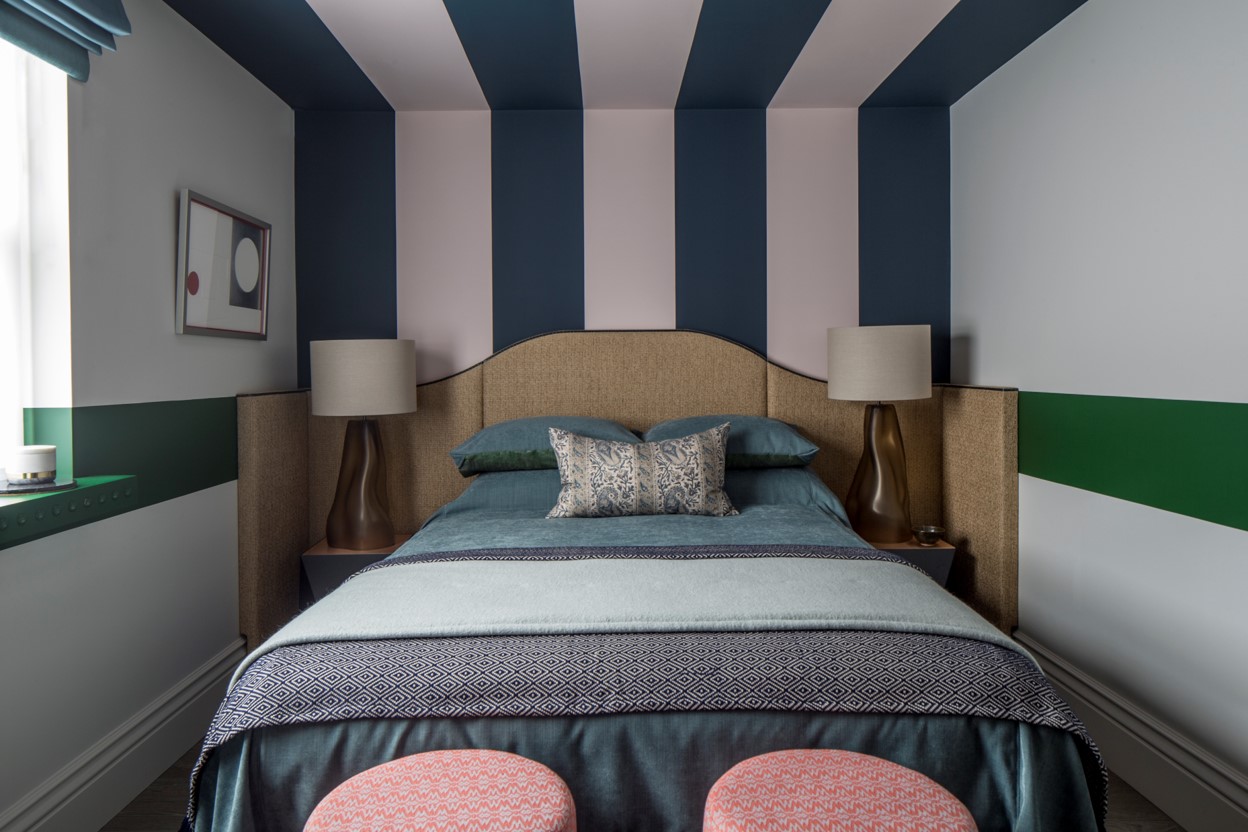
You heard it here first: striped walls are back and in a big way. If you’re a fan of stripes, there are plenty of unique and chic schemes to make an impact in your modern space.
Striped walls can help to zone a space creating the look and feel of a multifunctional room. And, if mastered correctly, placing vertical stripes in your space can make your room seem taller, while horizontal stripes can create the illusion of a wider area. So, adding stripes to your space is always a good idea and for more reasons than one.
Whether you're opting for paint ideas, wallpaper or something a little more experimental, perhaps one of the hardest choices you have when it comes to injecting stripes into your walls is the direction you add them, how thick of a stripe you go for and what material you use to create your designed effect.
To help you come to an informed decision, we spoke to interior designers to get their fresh take on adding stripes to your space and how to get it right every time. Keep scrolling to discover all the inspiration you need.
8 room schemes with inspiring striped walls
Striped walls might seem like an obvious accent wall idea, but don't be afraid to go in with stripes in a more significant way. It actually might be easier in the end, and there are less secrets than you might imagine for when it comes to how to paint stripes on a wall.
'With stripes, you have to be mathematical and measured as any irregularities in the design or the wall will show so measuring accurately is incredibly important as is working with symmetry to balance out the application of the stripes,' says interior designer Roselind Wilson.
'Don’t be afraid to use stripes on multiple walls and joinery, in essence, if you get the geometry wrong on a single wall it is more likely to be obvious but the minute you put something of such rigidity and accuracy on other walls you can balance it out. In terms of planning, your central stripe should be in the center of the wall, working out or left and right of this point.'
1. Create the unexpected
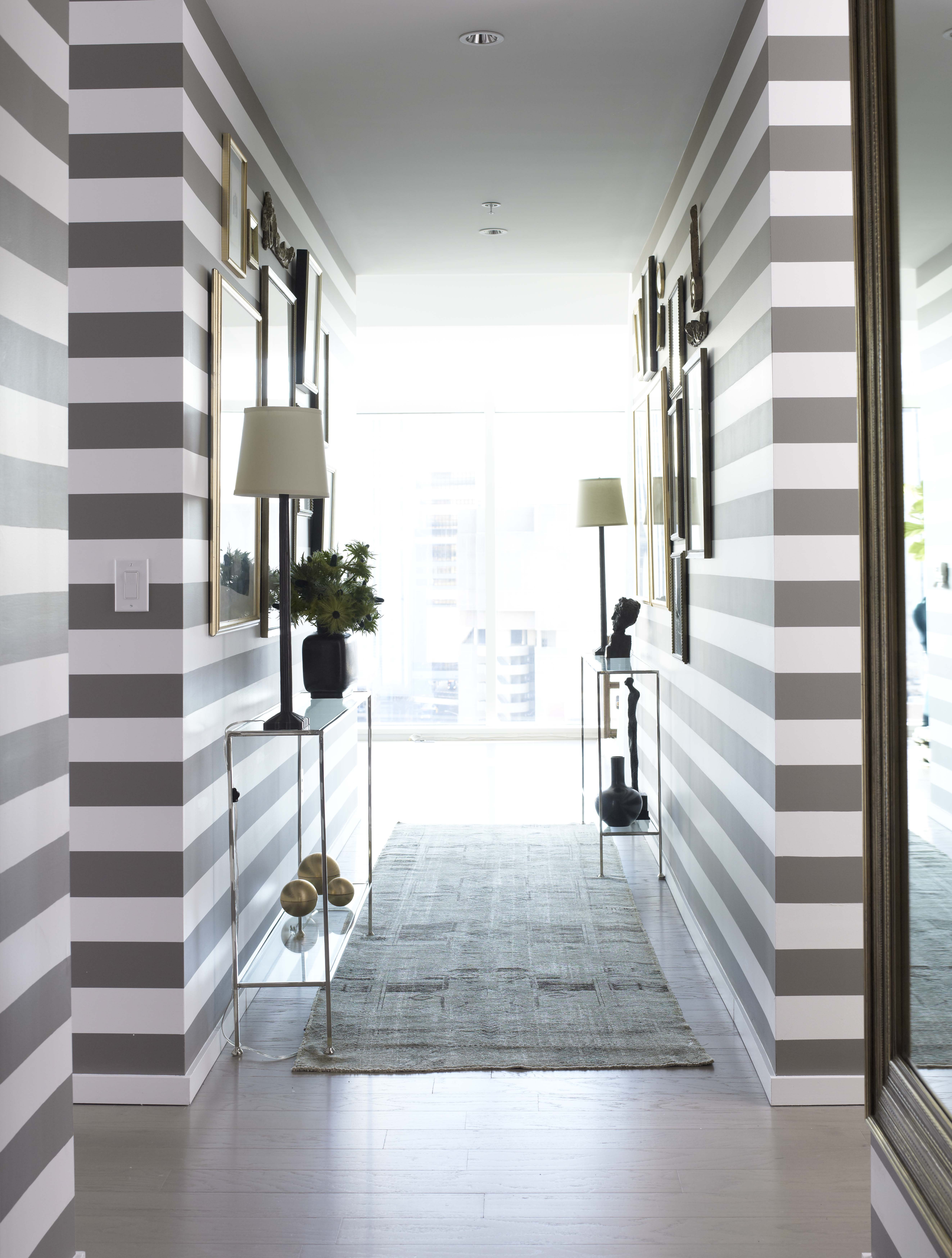
One of the best things about adding stripes to your walls? It can create an unforeseen pop of color and interest no matter the space.
Just take this hallway paint idea by Atlanta-based Amy Morris Interiors as an example. 'Two different paint colors, as seen in the foyer of this high-rise condo, create an unexpected entrance,' Amy says.
'The stripes lead you to the main gathering room. Stripes can create inexpensive pops of pattern and color.'
2. Incorporate interest into small spaces

But it’s not just our hallways where we can add stripes to our spaces. How about one of the smallest rooms in the house, like the bathroom? But instead of using wallpaper or paint, try something a little bit more waterproof.
'Other than paint and wallpaper, try adding stripes with tile,' Amy says. 'We used tile to make a horizontal stripe in a walk in shower to create interest in an otherwise predictable small bathroom.'
3. Make stripes diagonal
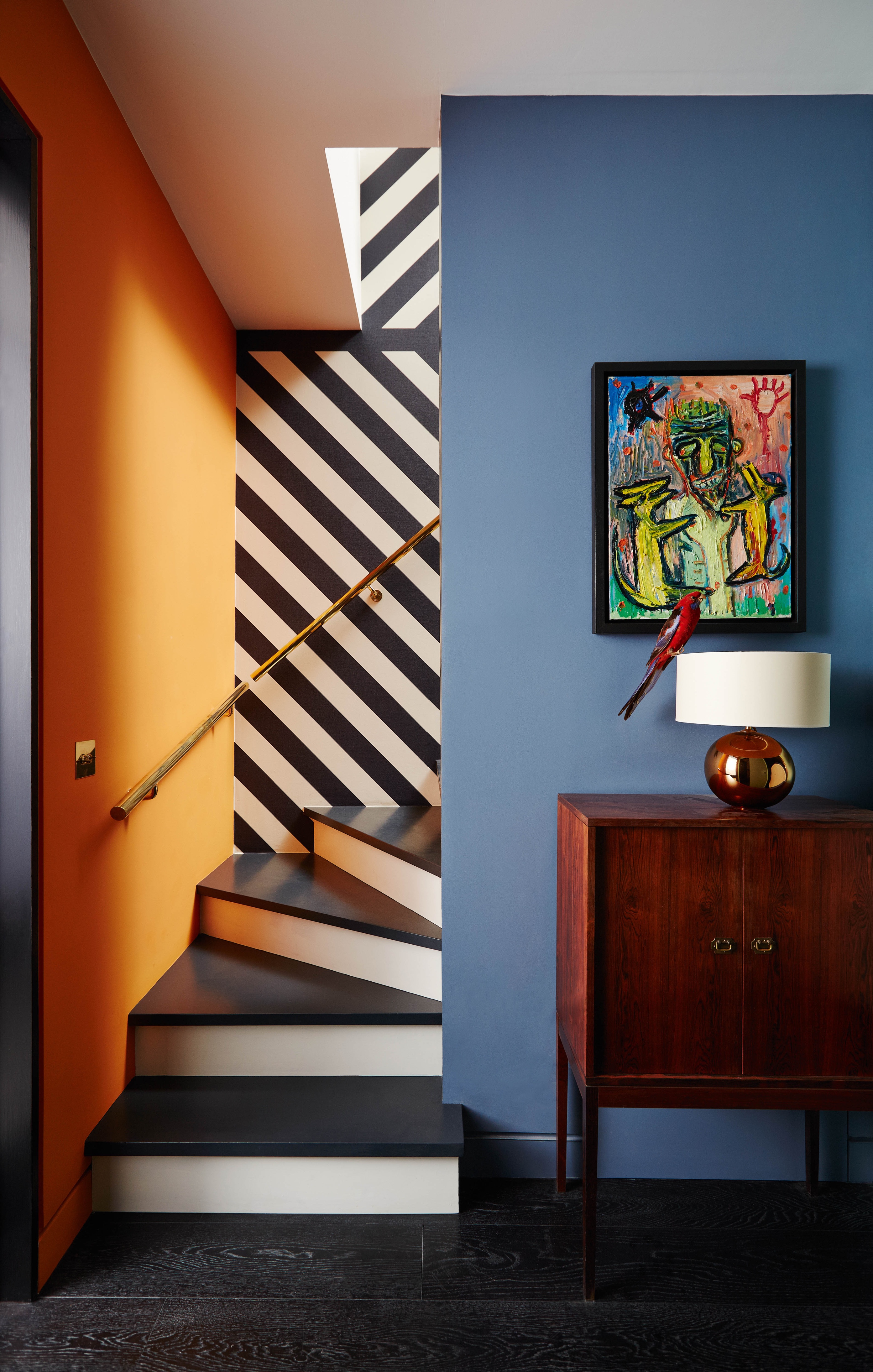
When you first thing of stripes, what comes to mind? Vertical designs? Horizontal masterpieces? Why not go against the grain and make your stripes diagonal?
In this design by London-based interior designer Suzy Hoodless, the diagonal stripes were used to ‘lead one’s eye down to the lower level’.
'Designed for a couple with wildly differing aesthetic tastes, this home sums up their individuality with bespoke pieces and a canny use of color and pattern,' Suzy explains.
'The challenge for us was to reconcile the two to create a harmonious family home. Our solution builds upon a backdrop of classic black, white and neutral shades,' she adds. 'For a tailored, personal feel, we commissioned several bespoke pieces, including graphic striped wallpaper idea along with flatweave rugs.'
But, if you’re worried about committing to diagonal stripes, Suzy recommends printing your design out to scale and living with it for a little while to test if it works for you.
4. Use wallpaper
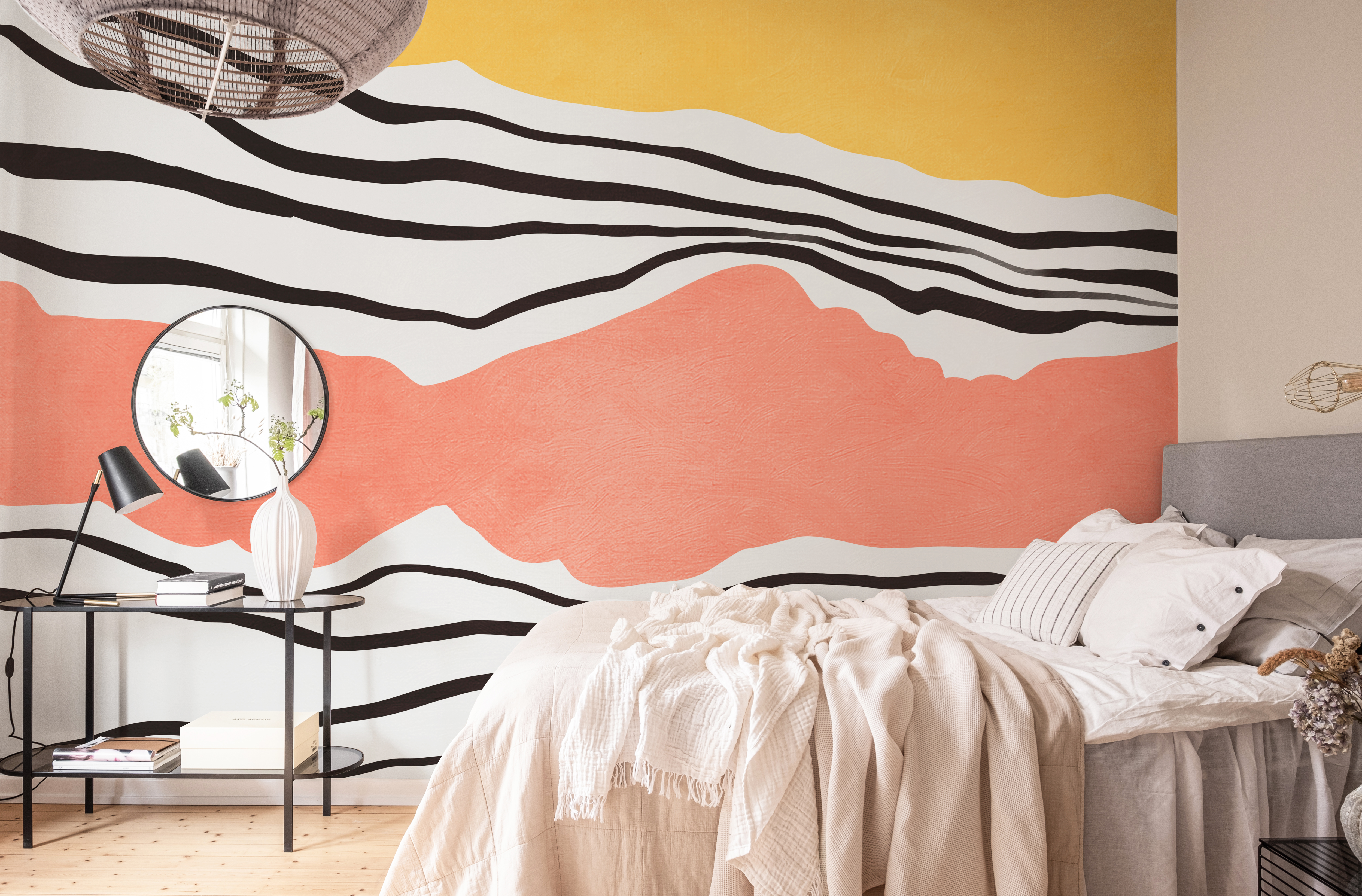
Once you’ve mastered how to wallpaper the rooms in your home, you won’t look back – especially when it comes to incorporating stripes onto your walls.
But don’t just take our word for it. 'Striped wallpaper is a classic that always works,' says Jonas Franke, design manager at Happy Wall. 'The stripes draw visitors in. Vertical stripes can actually make a room appear taller and horizontal stripes will make a room appear wider than it is. And another great thing about stripes is that they match beautifully with other patterns without competing with each other. So there's no end to the creative possibilities using stripes.'
5. Get creative
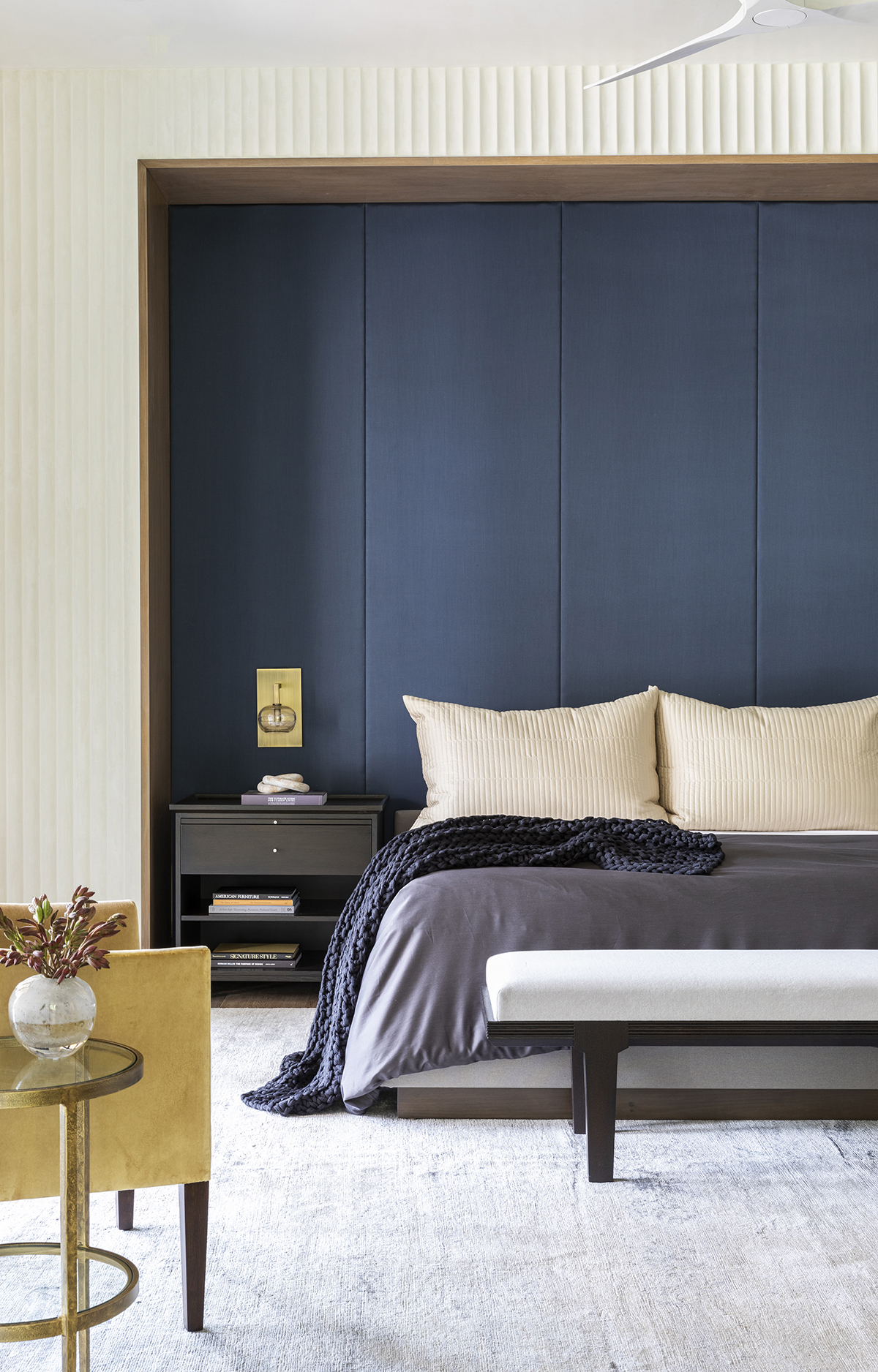
While wallpaper, tiles and paint are brilliant types of materials to help you create a room full of striped success, there is another way to add stripes to your space.
In this design by Houston-based award-winning interior designer and trained architect, Marie Flanagan has used a plaster finish-style wall paneling.
'Stripes can certainly add intrigue to a space, but a little bit of intrigue can go a long way,' says Marie. 'Remain thoughtful in how you incorporate stripes, like including them in wall textures, accent textiles and even drapery.;
6. Extend your stripes to the ceiling

If you’re feeling brave, try extending your stripes overhead. The best ceiling decorating ideas take your stripes to new heights (quite literally). After all, why should your walls have all the fun?
If you need any more convincing check out this design by Roselind Wilson Design, an award-winning interior design and interior architecture studio based in London.
In this design, the scheme features bold stripes reaching up and over the ceiling, a moody palette of blues and greens, and organic textures in the choice of the upholstered headboard and stools. The vision for the space was to create a story of structure juxtaposed with playful designs.
'The application of stripes is something quite traditional,' Roselind tells us. 'Often featured in wallpapers and fabrics in more classic or traditional properties, but for me, I think the application becomes much more interesting when you apply it to joinery or case goods that are fitted or which will sit against a wall.'
'This adds perspective depth and gives a 3D quality to the stripe, I like that,' Roselind adds. 'I like playing with a strong line that is vertically or horizontally projecting out of the wall so that you are dealing with the various planes simultaneously. I think this makes the space unique, makes it original. The stripe is such a great oxymoron because it is something so simple, a straight line of a certain thickness or line weight but it has such a strong impact, in complete opposites something so simple is yet so strong.'
7. Use stripes sparingly
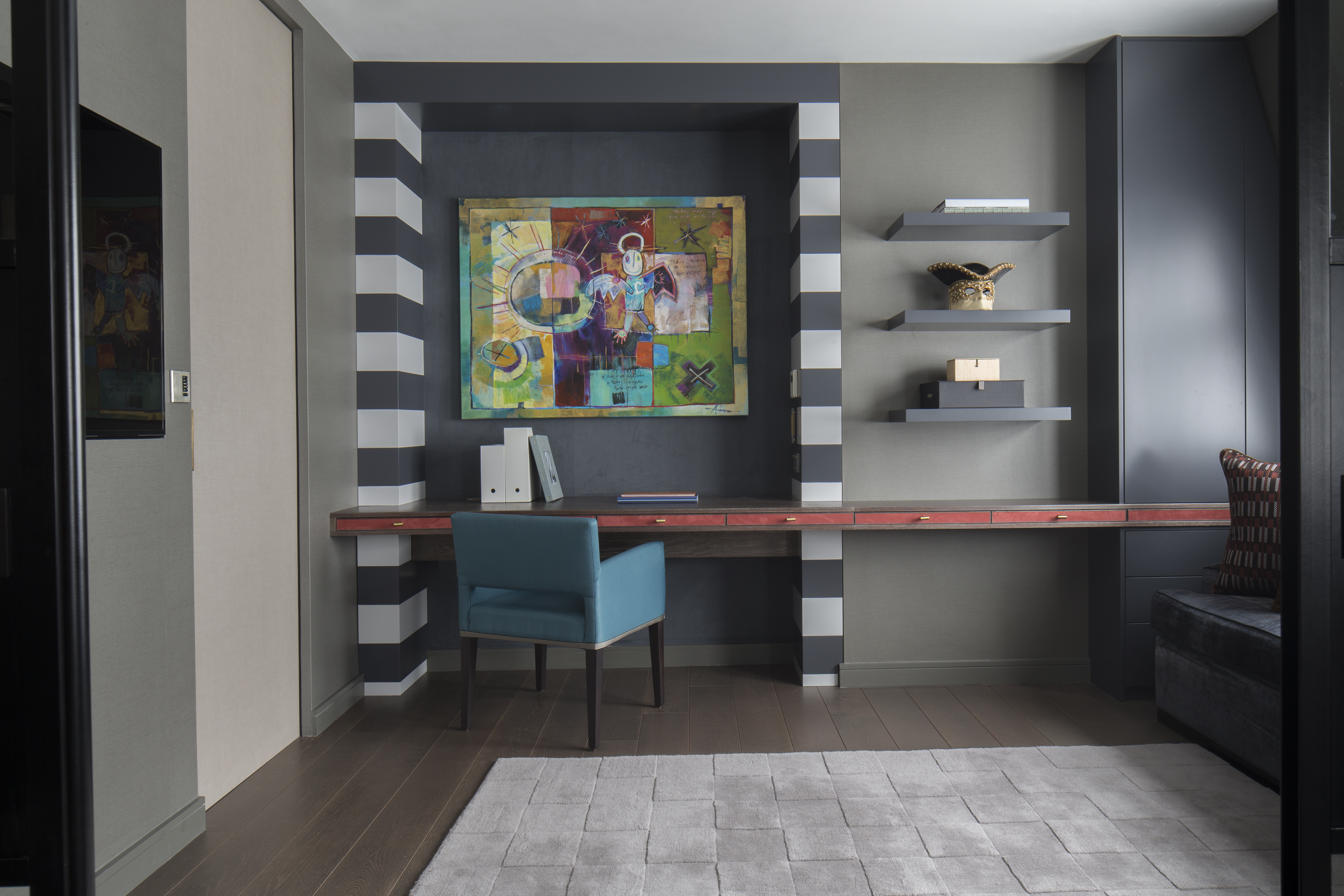
So we’ve seen stripes can work well in bedrooms. They can add a splash of excitement to hallways and they have earned a well-deserved place in the best living room ideas. But there's another room your stripes can work in – and that's your home office.
In this design by Rosalind, a splash of stripes has been used in the study area thanks to the use of bold charcoal-striped joinery.
' I like playing with a strong line that is vertically or horizontally projecting out of the wall so that you are dealing with the various planes simultaneously,' Rosalind says. 'I think this makes the space unique, makes it original. The stripe is such a great oxymoron because it is something so simple, a straight line of a certain thickness or line weight but it has such a strong impact, in complete opposites something so simple is yet so strong.'
8. Mix and match
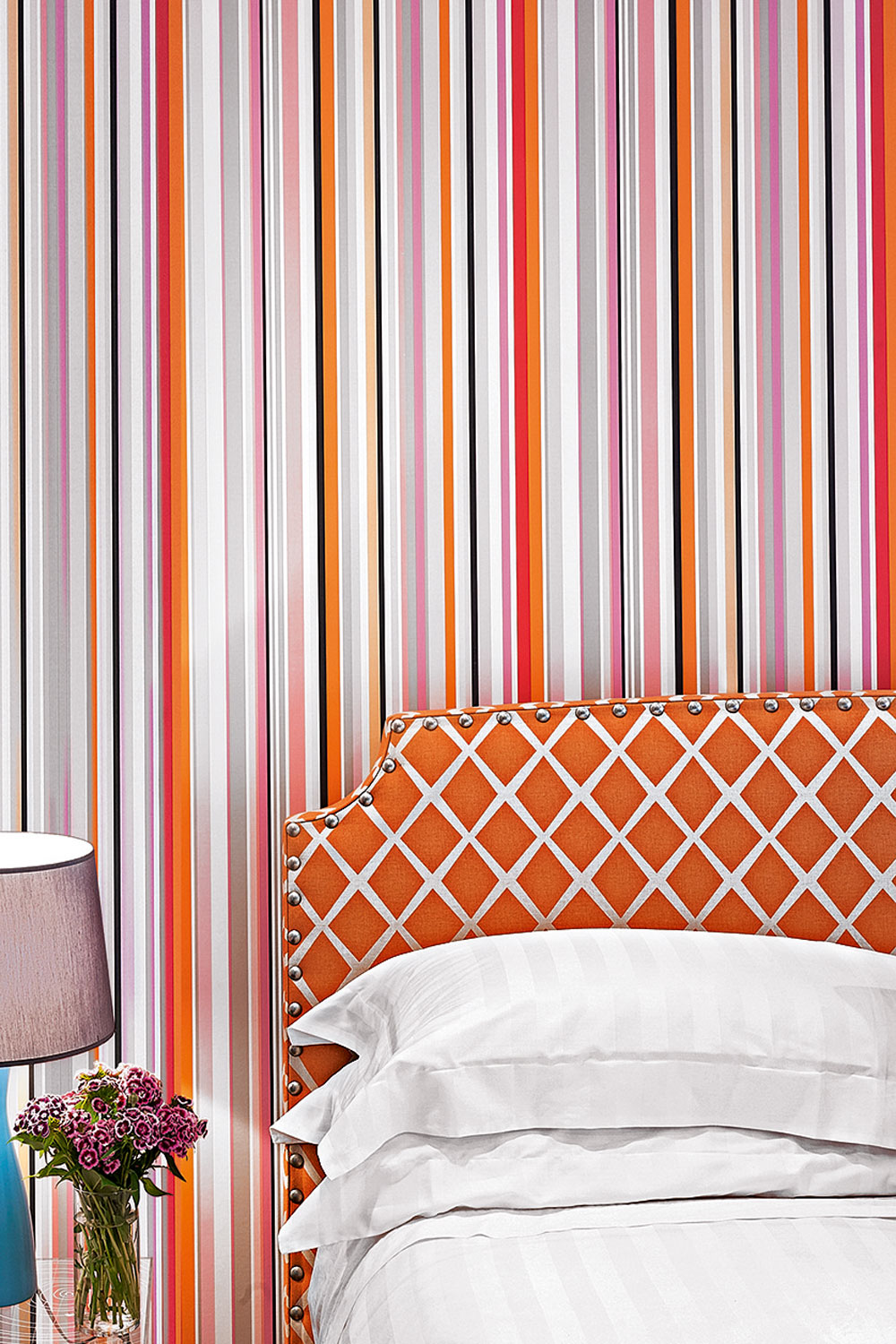
If you're a fan of color, print and pattern when it comes to striped designs, it doesn't always have to be case of 'less is more'.
Martin Waller, founder of global design brand Andrew Martin, believes if chosen correctly, combining different patterns in one space can work perfectly – and even in modern homes. It's all about 'choosing patterns in colors that complement each other.'
What do stripes do to a room?
'Vertical stripes add beautiful height to a room,' says interior designer Marie Flanigan. 'I love a subtle stripe that draws the eye upward and creates cohesion between the wall and ceiling.' On the other hand, horizontal stripes can make look wider.
But whether you add vertical, horizontal or diagonal stripes to your home, Rosalind Wilson says that the brilliant use of stripes adds visual perspective and depth, timeless interest and provides a strong feature. 'The rigid structure of contrasting lines draws your attention to a focal point,' Rosalind says.
Be The First To Know
The Livingetc newsletters are your inside source for what’s shaping interiors now - and what’s next. Discover trend forecasts, smart style ideas, and curated shopping inspiration that brings design to life. Subscribe today and stay ahead of the curve.
Becks is a freelance lifestyle writer who works across a number of Future's titles. This includes Real Homes, Top Ten Reviews, Tom's Guide, TechRadar and more. She started her career in print journalism at a local newspaper more than 8 years ago and has since then worked across digital and social media for food, fashion and fitness titles, along with home interior magazines. Her own interior style? She's big on creating mindful spaces in every corner of her home. If it doesn't spark joy or happiness, it has no place here. When she’s not writing, she’s reading and when she’s not reading, she’s writing.
-
 12 Essentials Every Cool, Collected Spring Host Needs — And You’ll Never Guess Where They’re From
12 Essentials Every Cool, Collected Spring Host Needs — And You’ll Never Guess Where They’re FromGuests will think you thought of everything, you just knew where to shop
By Julia Demer Published
-
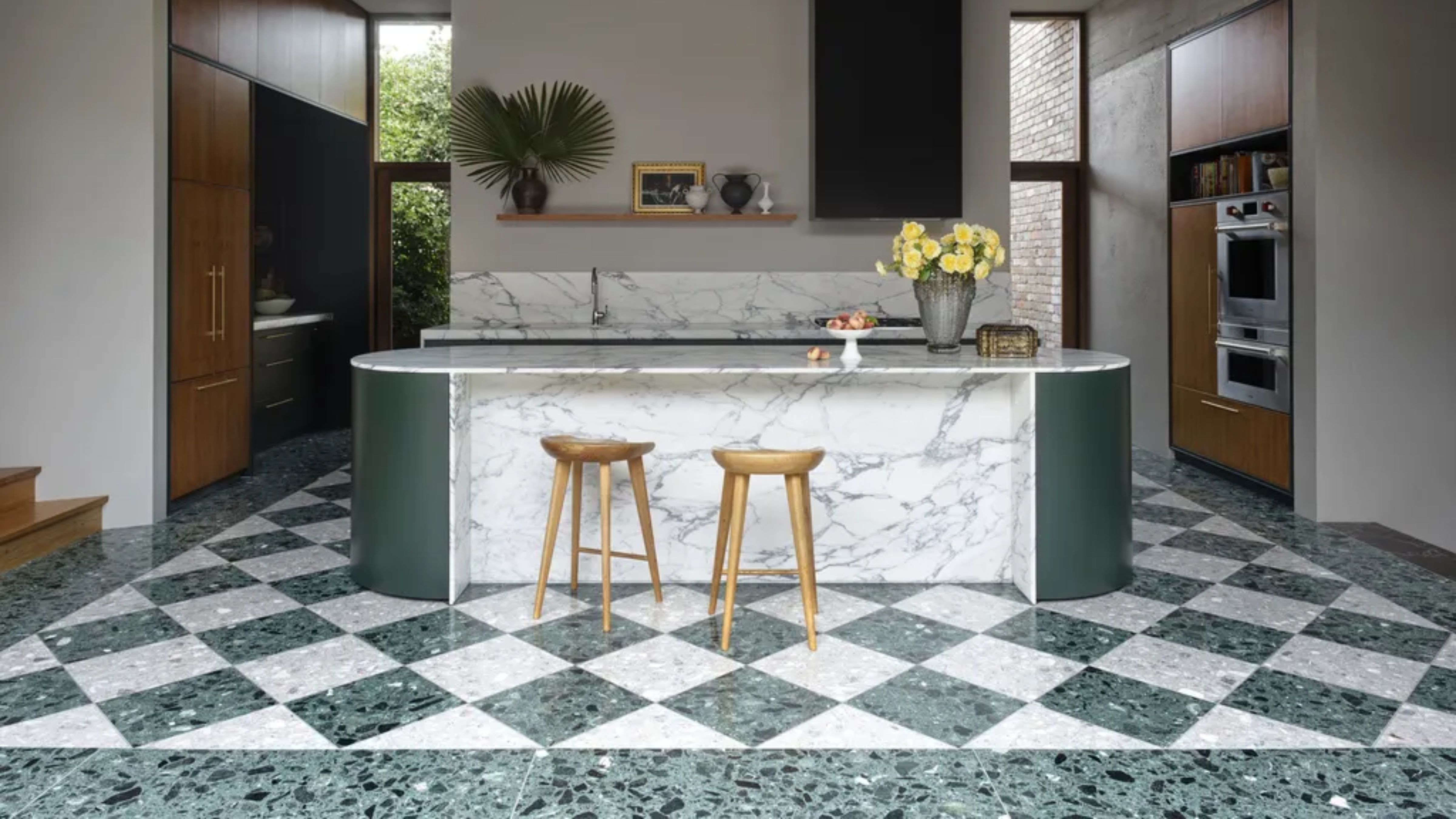 Smeg Says Teal, and We’re Listening — The Kitchen Shade of the Year Is Here
Smeg Says Teal, and We’re Listening — The Kitchen Shade of the Year Is HereDesigners are already using the soft, sea-glass green everywhere from cabinetry to countertops
By Julia Demer Published